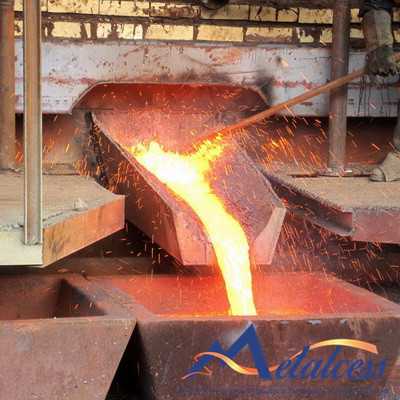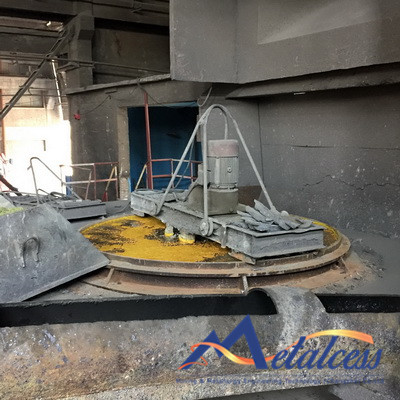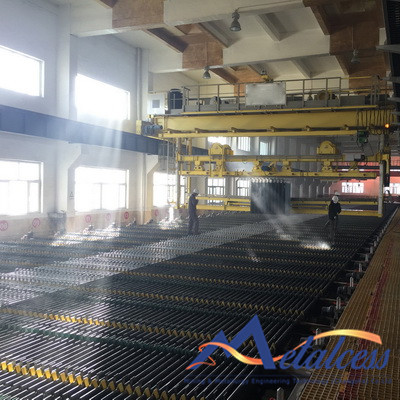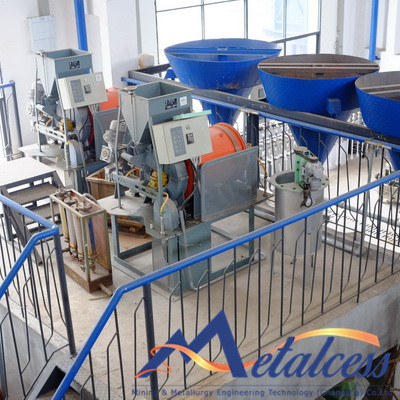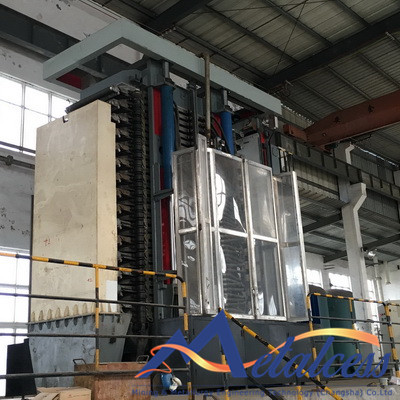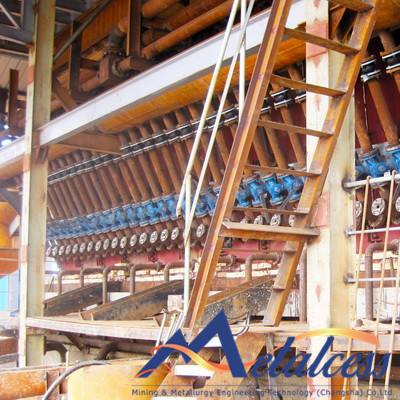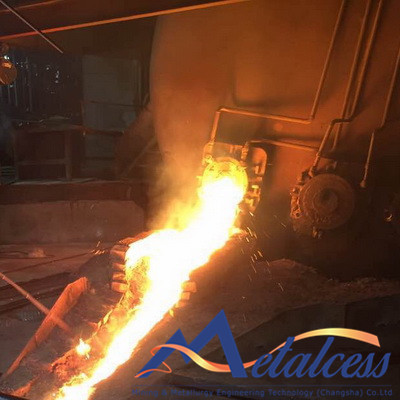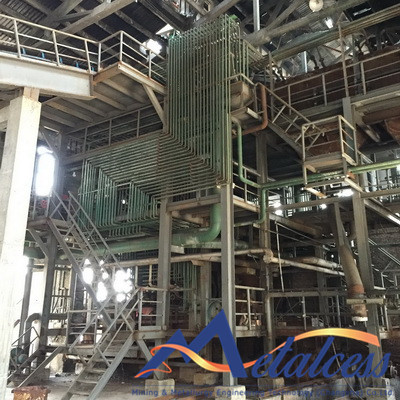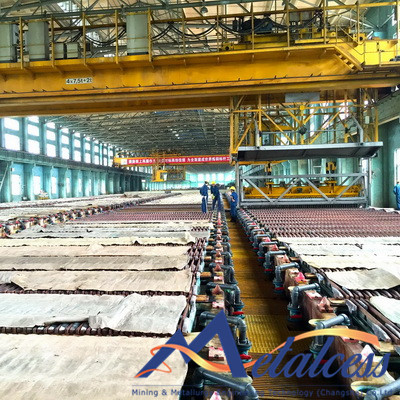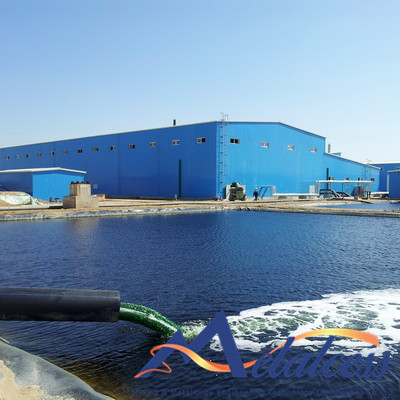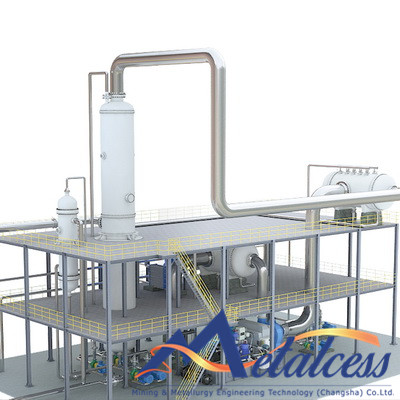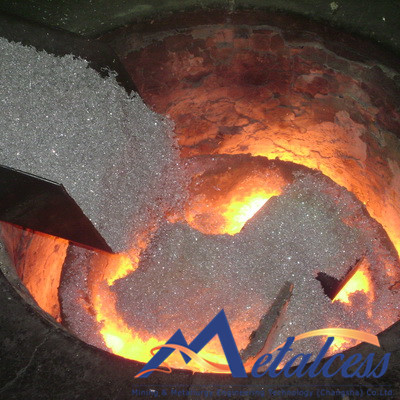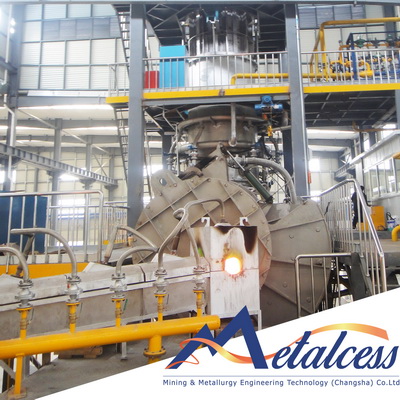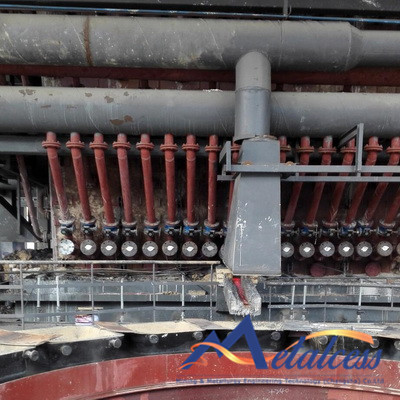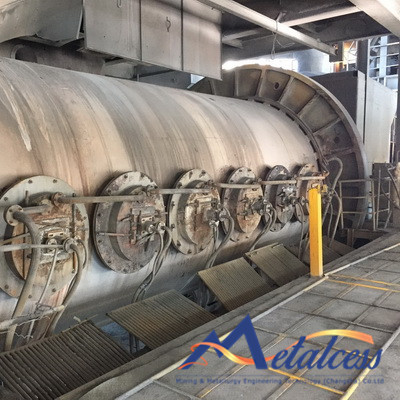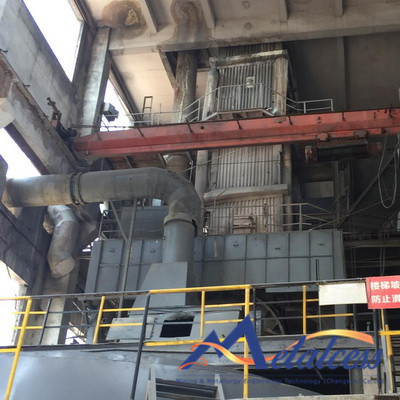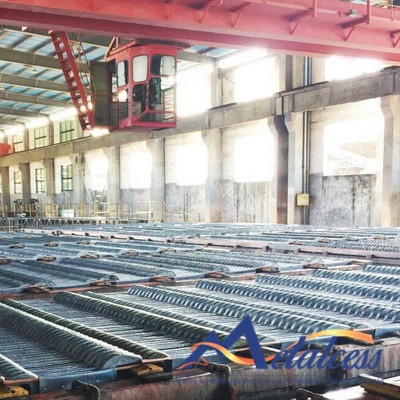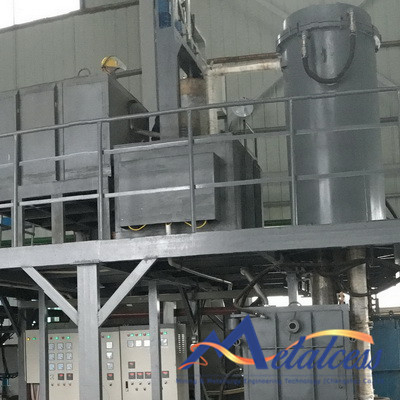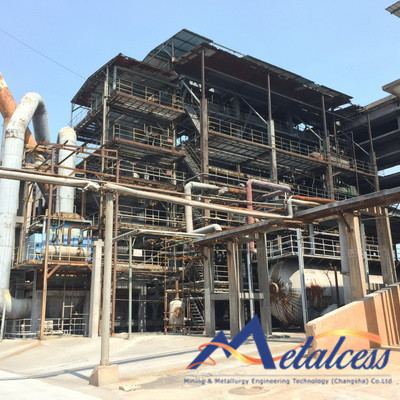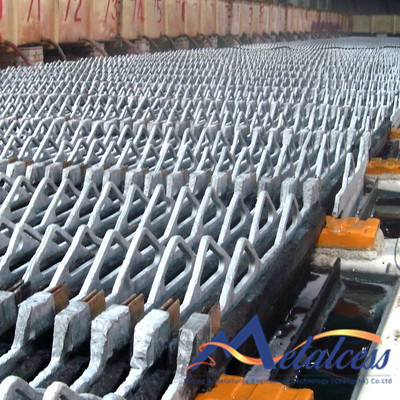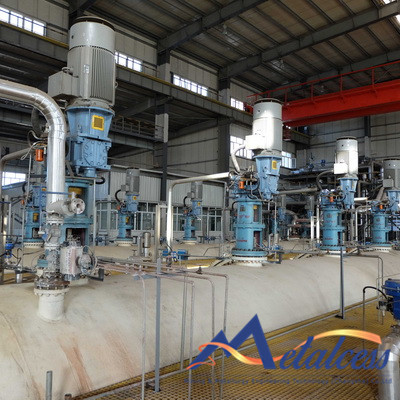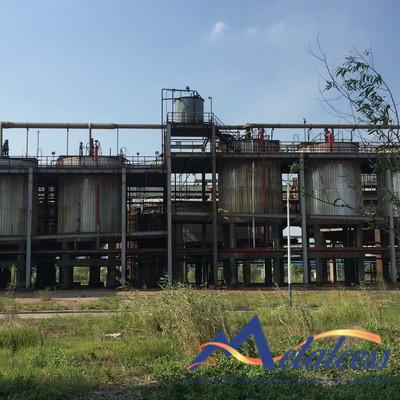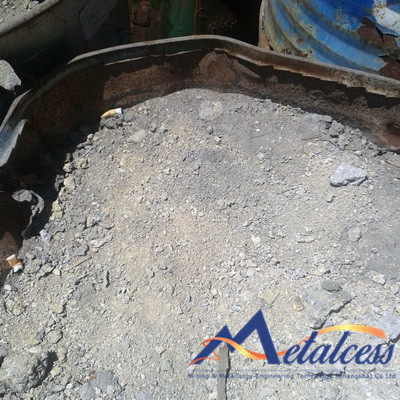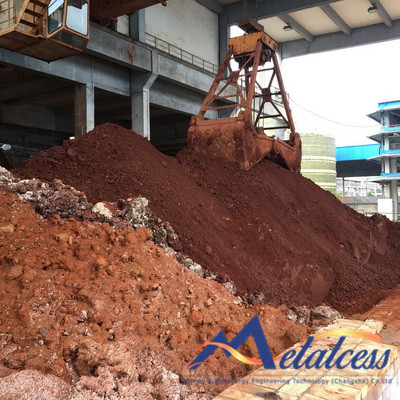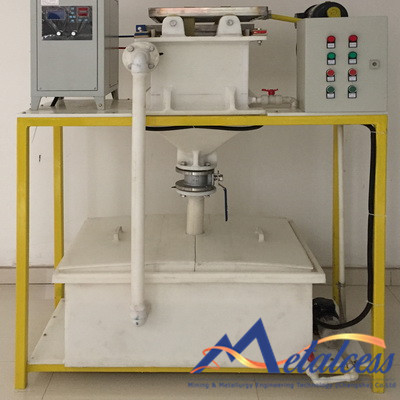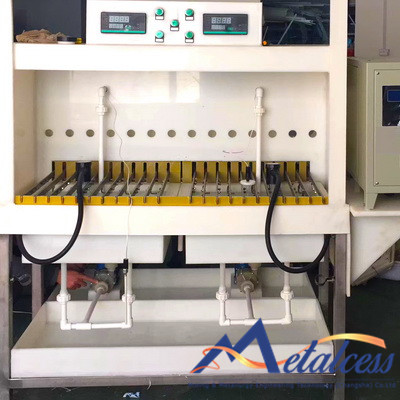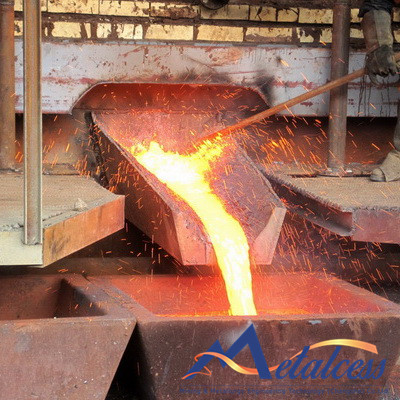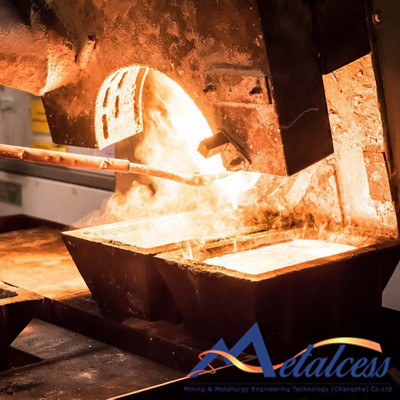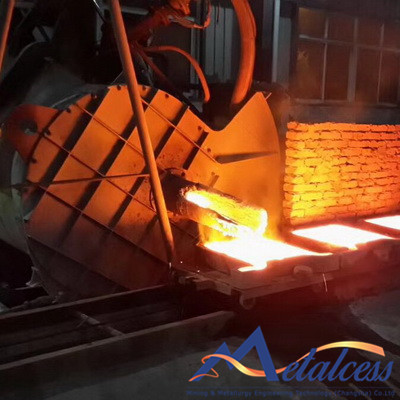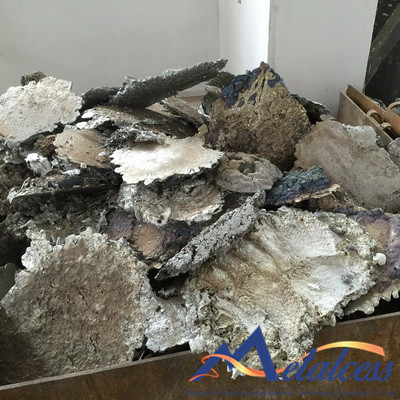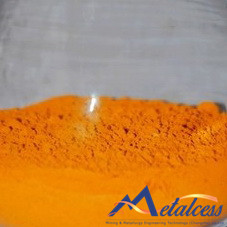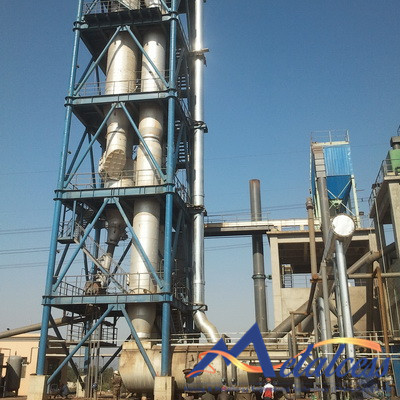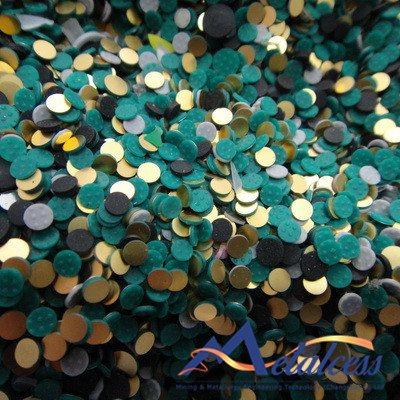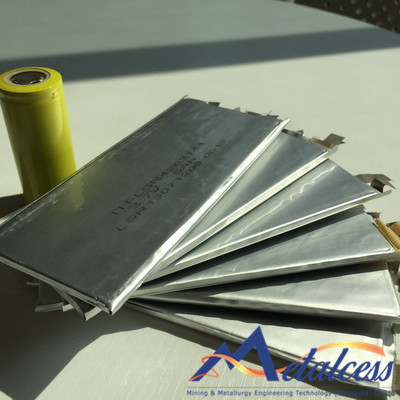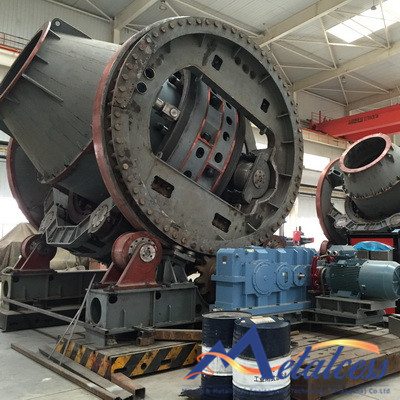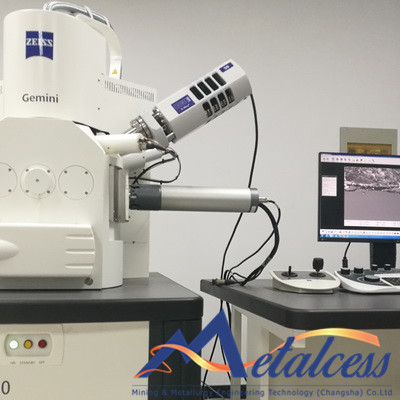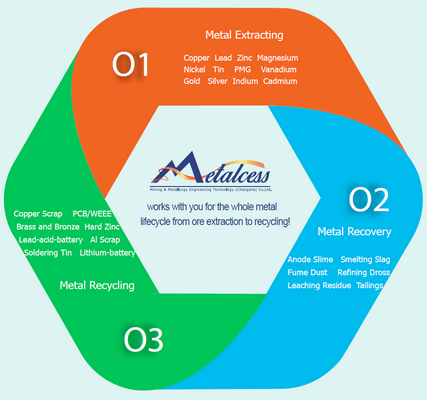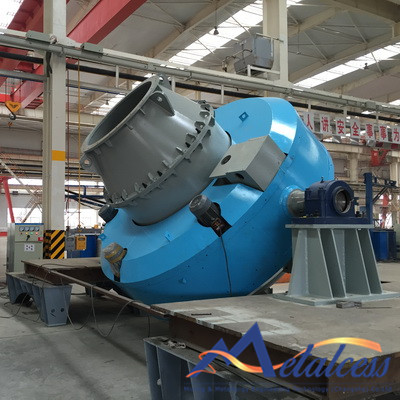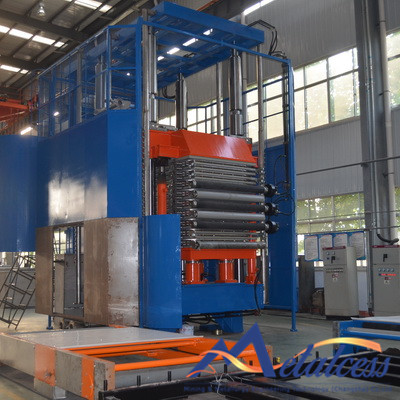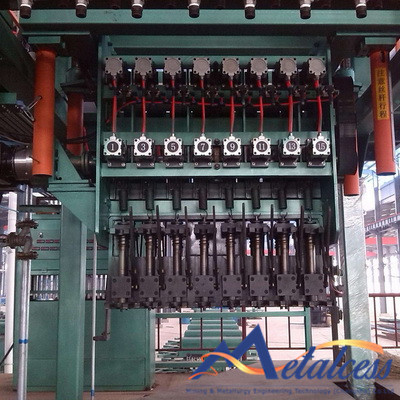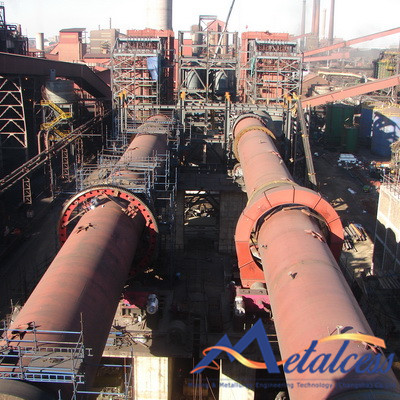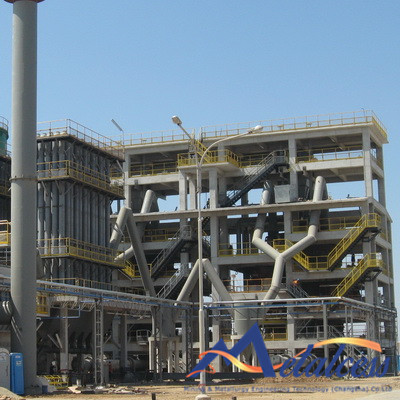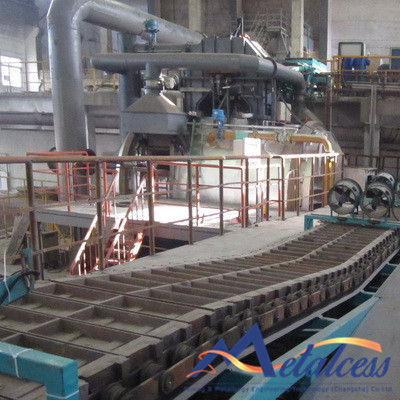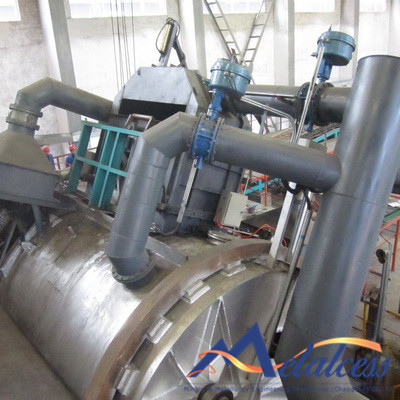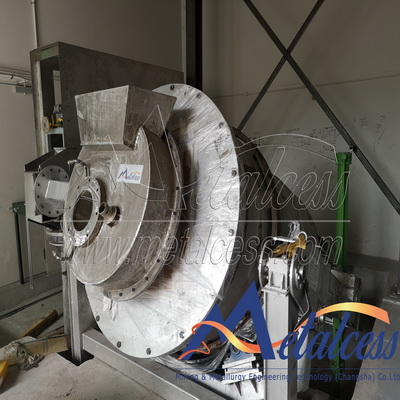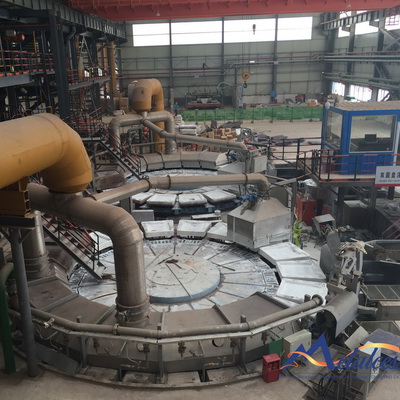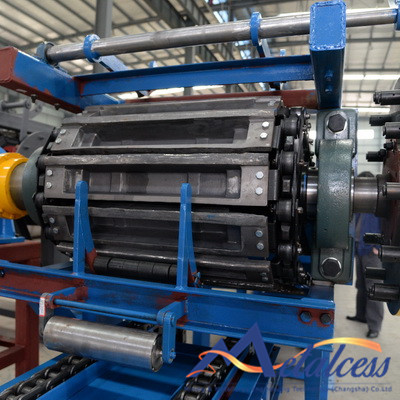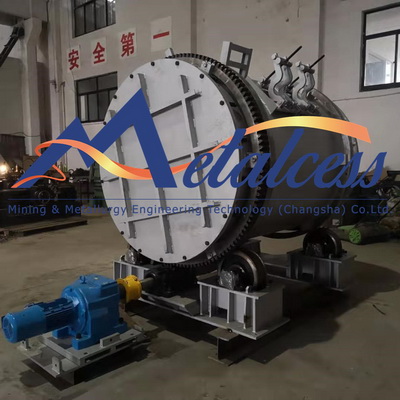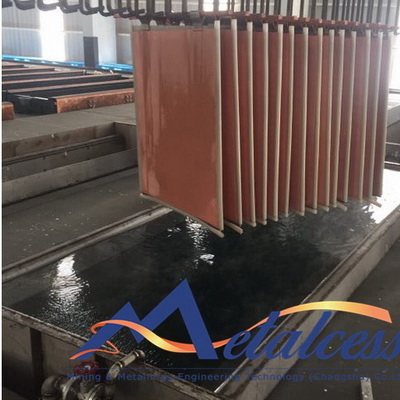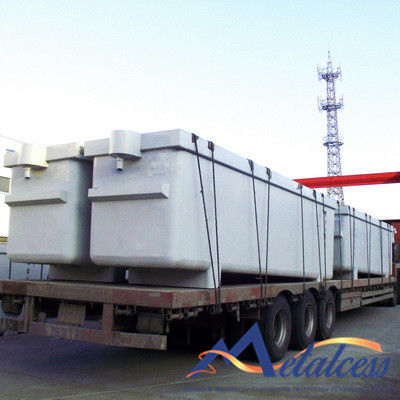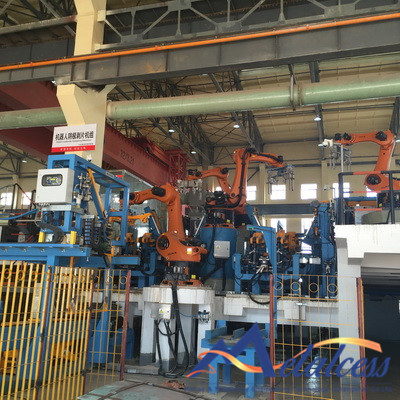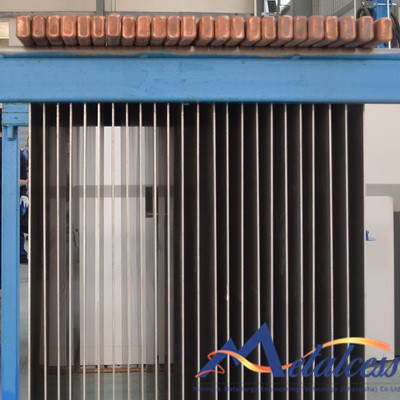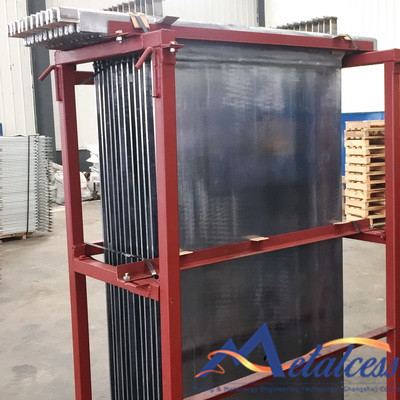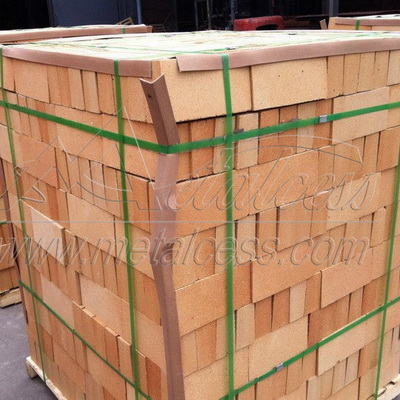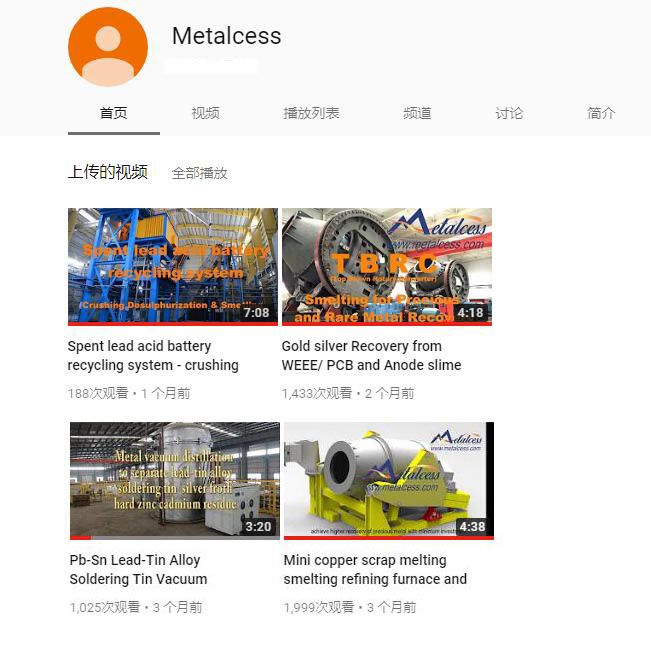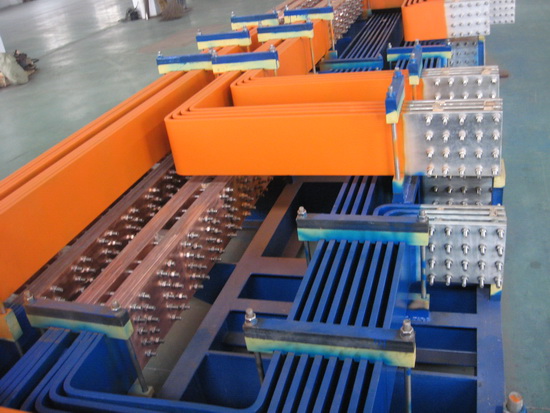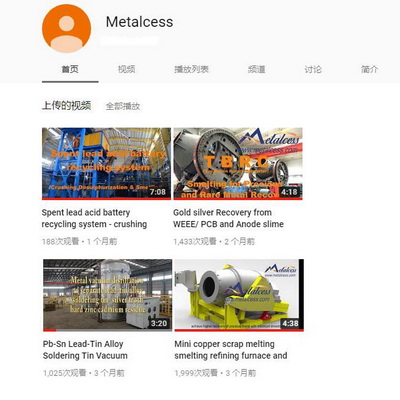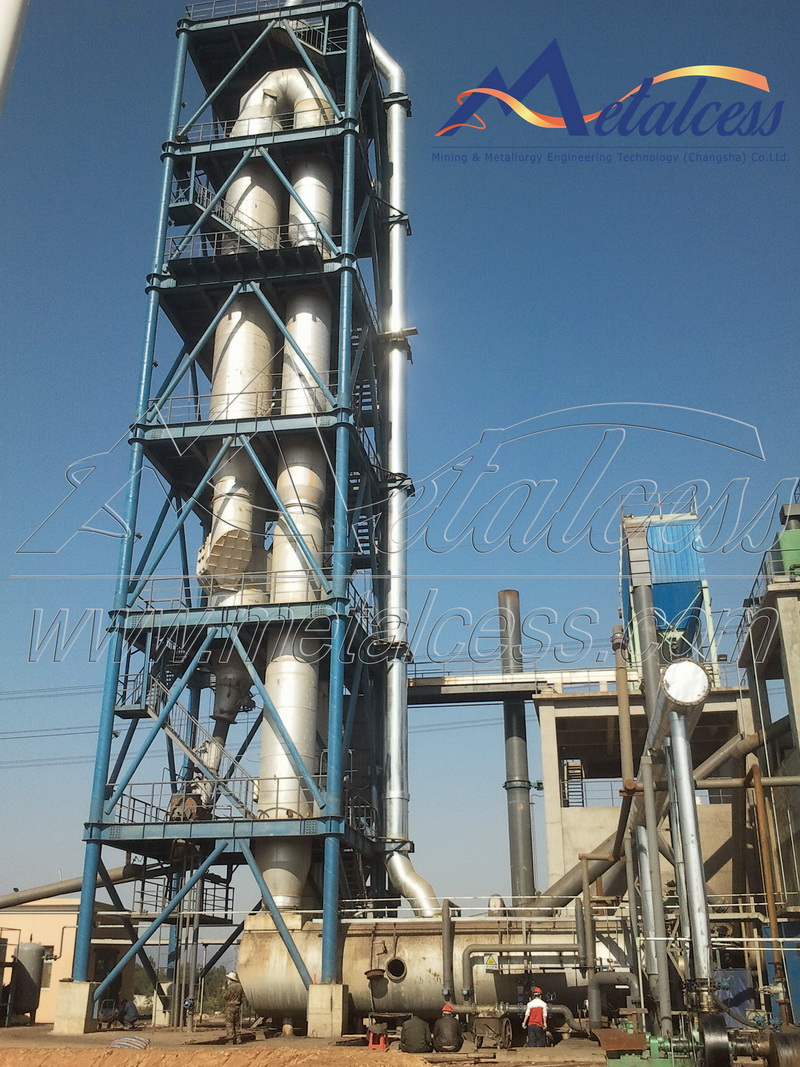Flash Magnetization Roasting furnace can be used to recover superfine low-magnetism iron residue/slag, especially those from zinc PLS purification and nickel laterite leaching, to standard iron ore. It treats weakly magnetic iron material like hematite, limonite, siderite and goethite. Minerals preheated by off gas waste heat are charged into the furnace and distributed uniformly in fluidized status for heat exchange and flash reaction.The roasting process encourages these minerals to have crystal transition for higher magnetism, thus making it possible to be concentrated to standard iron ore.
Working Principle
Once entering the furnace, the iron material is suspended in the high temperature and high reduction atmosphere, at which the heat transfer coefficient is as high as 500-2,000W/(m2.k), allowing the minerals to be heated up to specific temperature instantly (within scores of milliseconds). The uniform and instant reaction is also ensured by the fine grain size of materials though the material’s heat transfer coefficient is low (0.5-1.5 W/(m2.k)) .
The above chemical reaction is also accompanied by mineral crystal transition of iron material from weak magnetism to high magnetism Fe3O4, increasing specific magnetic susceptibility by 1,000 times, while the magnetism of gangue remained unchanged. In this way, the iron material can be separated from gangue by magnetic separation.
Characteristics
1. Suspending solid-gas heat exchange drastically reduces the required roasting time and also increase magnetization efficiency. The flash roasting process provides much higher gas-solid contact surface area and relative gas-solid movement speed than that of common rotary kiln. Preheating and magnetization reaction are completed in several seconds.
2. High tolerant to roasting temperature, reaction atmosphere and solid-gas ratio, easy operation and high reliability.
3. High operation rate. Separated the combustion section and magnetization zone, avoiding “ring-forming” due to local overheat.
4. High productivity with less land floor space and low investment to civil construction.
5. Easy for maintenance with less transmission parts, less electricity consumption.





